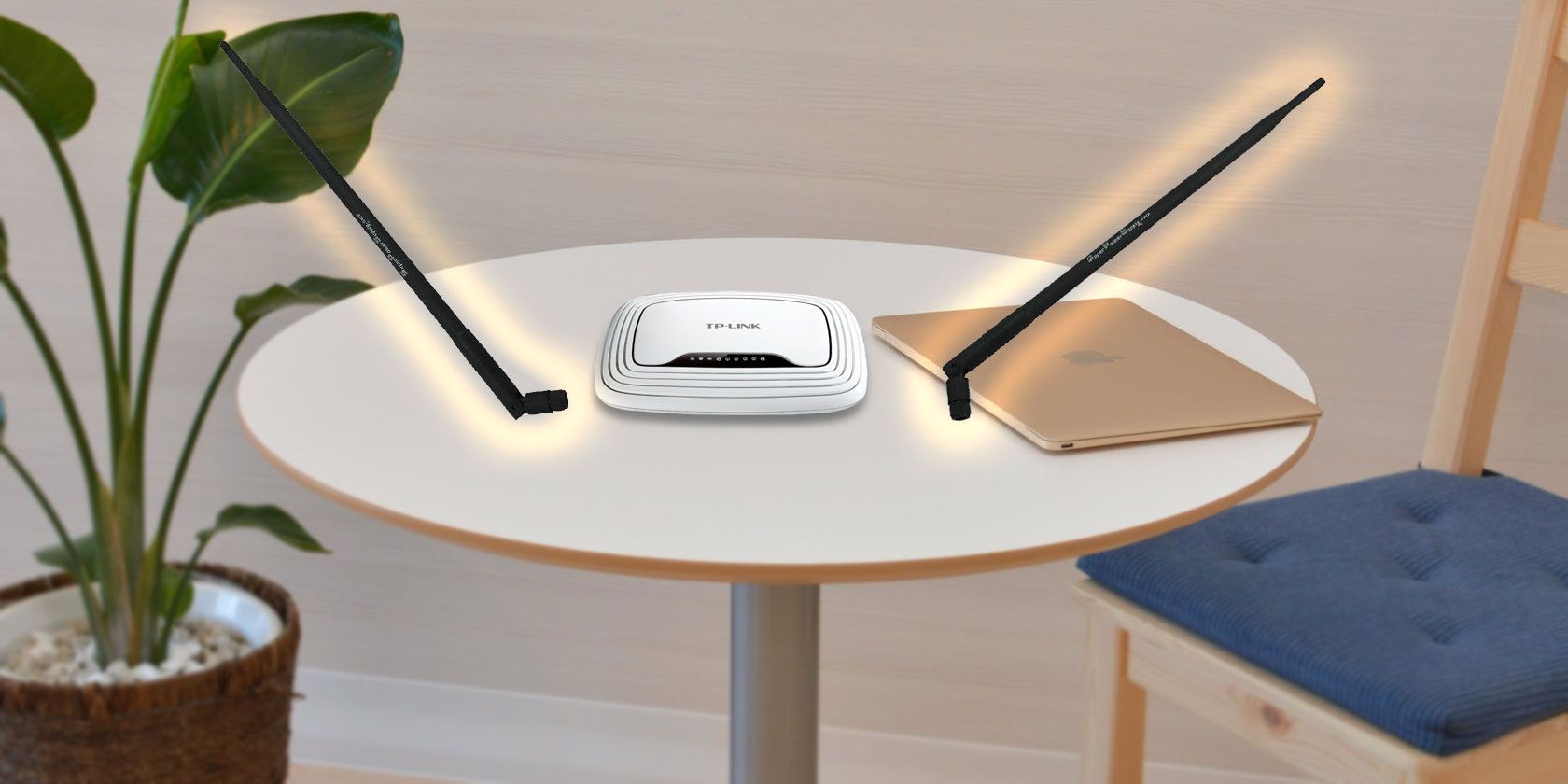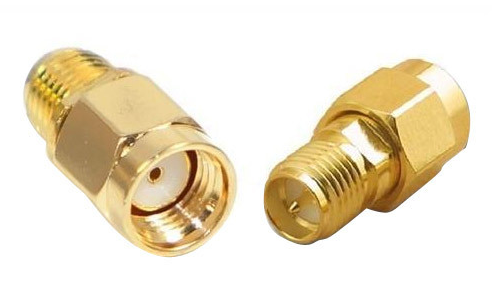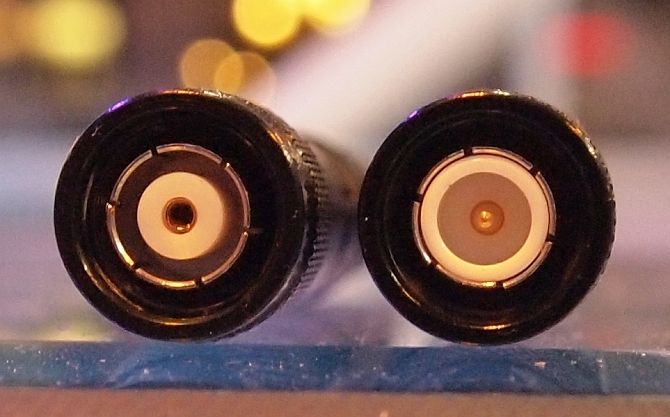For most people, the router is the first port of call for a lackluster Wi-Fi signal. You might have a router supplied by your service provider, which are quite a mixed bag.
Some providers want you actually to enjoy internet access throughout your home. Other service providers seem to take pride in delivering the worst router possible, complete with useless antennas.
If you fall in the latter camp, you can make an easy router modification to boost your signal: a high-gain Wi-Fi antenna. Let's take a look at the high-gain antenna options for your router.
Why Install a High-Gain Antenna?
There are a few important questions to consider before installing a high-gain antenna to your router. High-gain antenna advocates offer a few immediate positives for the installation of new antennas on your router. Consider the following:
- Increased broadcast range: The prospect of an increase to your Wi-Fi broadcast range is one of the most alluring benefits of a high-gain router. Hitting every room in your house with Wi-Fi from a single router sounds like a great idea.
- Broadcast control: A high-gain omnidirectional antenna replaced with a directional antenna grants precise control over your Wi-Fi broadcast direction.
- Faster Wi-Fi speed: On top of the broadcast range increase, you get a potential boost to overall throughput for better efficiency.
Types of High-Gain Antennas
There are two main types of high-gain antennae:
- Omnidirectional: Radio frequency broadcasts in all directions, creating a sphere of coverage.
- Directional: Radio frequency broadcast focuses on a specific direction, creating greater coverage distance.
There are also specialized high-gain antenna types, too. For instance, a parabolic antenna or Yagi antenna has the potential to broadcast your Wi-Fi signal for miles. Of course, you don't want to do that; there are smaller parabolic designs more suitable for a residential Wi-Fi setup.
The big question lies in what you want your high-gain antenna to do as well as the operating frequency of your router. Wi-Fi broadcasts on two radio frequency bands: 2.4GHz and 5GHz. 2.4GHz is slower with a larger range, while 5GHz is faster with a shorter range.
Within those bands are broadcast channels. Most routers automatically pick a broadcast channel, and many simply use their default specification. Some routers can assign channels with less interference using "smart" analysis, though.
What to Consider Before Getting a High-Gain Antenna
Before splashing out on a high-gain antenna, there are four aspects for you to consider:
- Router placement: The placement of your router makes a vast difference to its broadcast range. Having your router placed in the far corner of your living room isn't going broadcast Wi-Fi to your backyard (depending on the layout of your house, of course). Your router should sit in the center of your home, away from walls and other solid restrictions known to disrupt Wi-Fi signals.
- Broadcast channel: As mentioned above, your router broadcasts Wi-Fi on a specific channel. Default channels are full of other Wi-Fi signals, especially if you live in an apartment or row of houses. We have a short guide on picking a unique wireless channel for your router.
- Wireless standards: Wi-Fi is Wi-Fi, right? Not quite. Different wireless standards govern broadcast range and frequency. For instance, the latest mainstream wireless standard, 802.11ac, broadcasts the 5GHz frequency over distances of around 100-150 feet at speeds up to 1Gbps---but only the 5GHz frequency. Wireless standard 802.11n broadcasts the 2.4GHz and 5GHz frequency at speeds up to 300Mbps over distances up to 200-250 feet. The gist is that an old router will broadcast using old wireless standards that cannot offer the range or throughput most modern devices and services require.
- Integrated power boost: Some routers have a power boost setting found in the administration panel. Search online for "[your router type] power increase setting" to see if that is the case.
Have a play around with your positioning and broadcast channel, as well as double-checking that it adheres to the latest wireless standards, before opening your wallet.
How to Attach a High-Gain Antenna to Your Router
Attaching a new high-gain antenna is an easy task---depending on your router.
Unfortunately, not all routers have detachable antennas and thus customizing with a high-gain antenna is impossible. Check your router specifications for more information about its antennas. Generally, if you cannot see the antennas sticking out, you won't have a chance to upgrade them.
The first piece of hardware to check is the connector type. The two most common high-gain antenna connector types are SMA and TNC (with their corresponding connectors on the router, or vice-versa). The easiest way to figure this out is to unscrew your existing router antennas and have a look.
Here's what SMA connectors look like:
And here's what TNC connectors look like:
Once you know the type of connector on your router, you can shop around for a high-gain antenna that suits your requirements; I've listed several options in the next section. When your new high-gain antenna arrives, simply screw it into the router and bask in the glory of your newfound Wi-Fi range.
Which High-Gain Antenna Should You Buy?
Your high-gain antenna requirements are specific to your environment. However, there are a few antennas you should check out due to their price point and versatility.
Always remember to check compatibility before purchasing; certain high-gain antennas work better with some routers than others.
1. Super Power Supply 2 x 9dBi RP-SMA
These humongous omnidirectional dual-band high-gain antennas theoretically provide a decent boost to your Wi-Fi range. The Super Power Supply manufactured antennas work with a wide-range of Linksys, Cisco, Belkin, Netgear, and D-Link routers.
2. GP Electric Set of 2 Long Range Dual Band 9 Dbi Antenna
Similar to the Super Power Supply option above, but the physical antennas are marginally shorter. The antennas are dual-band, omnidirectional, and offer 9dBi gain.
3. Alfa ARSN19M
Alfa is well-respected regarding wireless antennas and wireless cards. The 9dBi omnidirectional Wi-Fi booster will give your router range an ample boost and works well with a considerable number of Linksys, Cisco, Belkin, Netgear, D-Link, TP-Link, and Alfa routers.
4. Alfa APA-M25
The Alfa APA-M25 is a handy entry-level directional (the other options are all omnidirectional) high-gain antenna best suited to indoor environments. The APA-M25 comes with 10dBi dual-band directional gain and works well with a wide-range of popular routers.
Other Options: Wi-Fi Extender or Powerline Adapter
You have a few high-gain antenna options here to choose from. But before you go, there's a final consideration for you to make: high-gain antenna, Wi-Fi extender, or powerline adapter?
Ultimately, the decision lies in your Wi-Fi range predicament, the layout of your home, and of course, how much cash you're willing to part with.
For most people, plugging in a powerline adapter with a Wi-Fi function is an easier option than deciding on the best high-gain antenna. The powerline adapter gives you flexibility, too, in that you can plug the adapter and its Wi-Fi capabilities into any socket in your home. A basic powerline adapter set with Wi-Fi doesn't cost much, either.
There's also the option of separate Wi-Fi extender. Here's how a Wi-Fi extender works, along with a few purchase suggestions.



